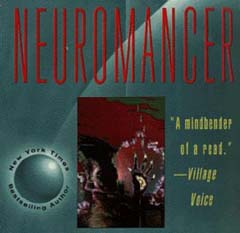
Credited with creating the term cyberspace.
http://www.artmuseum.net/w2vr/timeline/Gibson.html
In his science fiction novels, William Gibson's hallucinatory account of cyberspace provided the first social and spatial blueprint for the digital frontier. In his 1984 novel Neuromancer – a colorful, disturbing account of our emerging information society – he added the word "cyberspace" to our vocabulary. His writings explore the implications of a wired, digital culture, and have had tremendous influence on the scientists, researchers, theorists, and artists working with virtual reality. Gibson's notion of an inhabitable, immersive terrain that exists in the connections between computer networks, a fluid, architectural space that could expand endlessly – an invitation to "jack in" to the "digital matrix" – has opened the door to a new genre of literary and artistic forms, and has shaped our expectations of what is possible in virtual environments.
In Neuromancer (1984), as well as his later novels Count Zero (1987) and Mona Lisa Overdrive (1988), Gibson's vision of cyberspace, with its anti-heroes who reside in the void between the physical world and the network, helped spark an age of the post-human. The cyborgian redefinition of self has since been staged in such immersive cyber-habitats as MUDs, virtual communities, and on-line chat spaces, where identity has become malleable and interchangeable. Gibson's strange, menacing virtual world meshed perfectly with the detached, ironic stance of late 20th century culture.
http://textz.gnutenberg.net/textz/gibson_william_neuromancer.tmp
Full text online.

